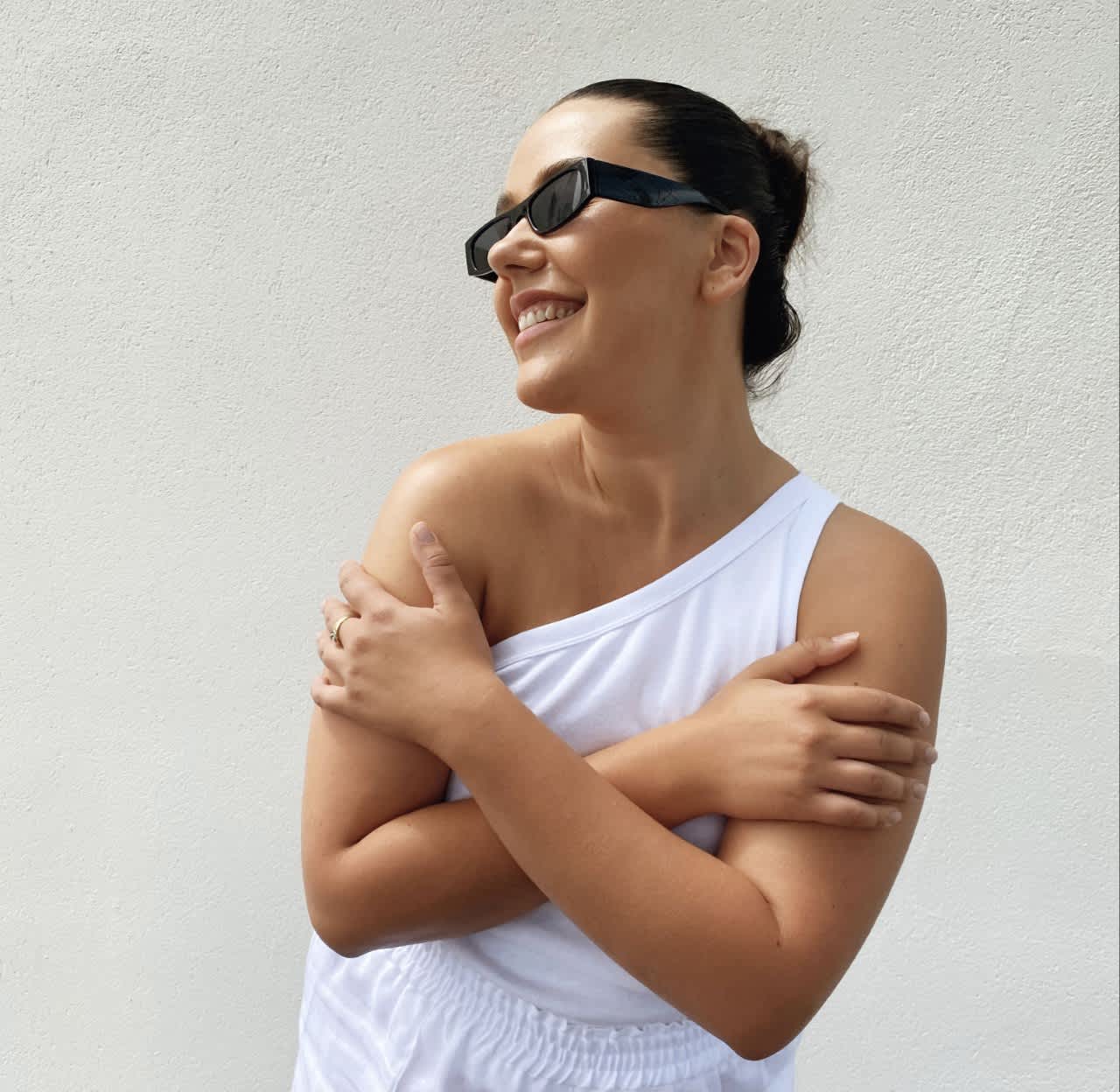
- POPSUGAR Australia
- Fashion
- The Sizing of Online Stores Could Be Lying to You, Says This Curve Model
The Sizing of Online Stores Could Be Lying to You, Says This Curve Model

Ever tried on a clothing item you saw a model the same size as you wearing, but then discovered it doesn’t fit? If so, you’re not alone.
1 in 2 women have found that clothes didn’t meet their expectations after looking different on them than they did on the model, says research from body positive fashion app Mys Tyler.
Now yes, if you’re looking at a pair of jeans on a size 8 model, but you’re a size 16 — then of course it will look different. But what about on a size 16 model?
Today, many brands have made the (seemingly) positive step towards showing their items on different body types, in order to make fashion more inclusive. I work as a curve model in Australia, which means I am often one of those models you’ll see on an online store, modelling a slightly larger size. However, the size I’m wearing isn’t always the size they label it as.
I’ll explain.
My body fluctuates, and given that there’s no regulated size guide in Australia, I range from a size 12-16 depending on the brand. My body itself also fluctuates depending on the time of month, sickness, hormonal changes and just generally being a woman.
Because of this, we always do castings and fittings before a shoot. This involves me going in to try on a bunch of different styles from a brand I’m set to work with, so that they can best determine my average size according to their sizing. Sometimes they’ll get me to try on multiple sizes, to see which fit looks the best in person and on camera. Then, they’ll take test photos of me in all the different sizes (that fit), to get an idea of what size they’ll use.
Therefore, technically I should always be modelling the correct size for my body type. But this isn’t always the case.
I’ve rocked up at multiple shoots where I’ve been dressed in a size that is too big for me. Whether it’s jeans, a dress or a skirt, the stylists will bulldog clip the clothes to fit me, so that they look like a perfect fit on my figure for the camera. Then, they’ll label the clothes as the bigger size online.
Now, I take issue with this for a multitude of reasons. Firstly, it’s not a honest depiction of the size. If I’m wearing a size 16 of the brand, but I am more of a size 14, then the size 16 will look smaller on the website than what it actually is. This means that if a person whose measurements say that they’re a size 16 for that brand, they’d look at a photo of me modelling the size 16 (which is technically a 14, given all the bulldog clips) and think “damn, that size 16 is super flattering”. When in actual fact, it’s not really a size 16.
Obviously, many shoots require adjustments to the clothes so that they look good on the camera. But there is a huge difference between one bulldog clip to give the waist more shape, and 12 bulldog clips down the back of each jean leg, to make the jeans look tighter than they are; totally changing the shape.
Secondly, it makes my job really hard. When you have upwards of twelve bulldog clips on your clothes, any slight movement can cause them to pop off; which means that you can’t really move. Sometimes, especially when shooting e-comm (short for e-commerce, which are just online store photos) you don’t need to move much, but you still need to look relaxed in the face — which can be hard to do when you can’t move around.
Thirdly, it takes away all the good work that brands are doing by being inclusive. If a fashion brand has expanded their sizing to go up to a size 24, for example, but use a size 18 model in their biggest sizes so it looks “better” online; then what’s the point?!
If fashion is going to take the big brave step to be properly inclusive, I personally think that should involve utilising the actual body size to model it’s relative online sizing.
With these small microaggressions against people that don’t fit within an “ideal” body type still prevalent in the industry, how can we move forward as a diverse community? It’s true that fashion has made positive changes in the past few years, but in moments like these I can’t help but feel as though they’ve done so out of necessity, rather than desire.
I certainly feel that in Australian fashion, there is still an underlying expectation that you have to look a certain way. This goes against the popular messaging surrounding inclusivity, and ultimately goes against my place in the industry as a plus sized model.
I want to be vulnerable with my body, I want to show other women out there that I’ve accepted how my body looks, and that they can do. I want women to see me in an online shop and think, “wow, she looks good, so maybe so can I!”. I certainly don’t want them to see me as unattainable. That is not my job.
My advice would be to find a few brands you can trust. Some brands are amazing with their size diversity and inclusion. They show their clothes on bodies as they are, and they’re honest about their sizing. Find those brands that work for you, and make sure you always check their online size guide, rather than going off what size the model is wearing.
Because as you now know, you can’t always trust it’s a true representation of that size.


